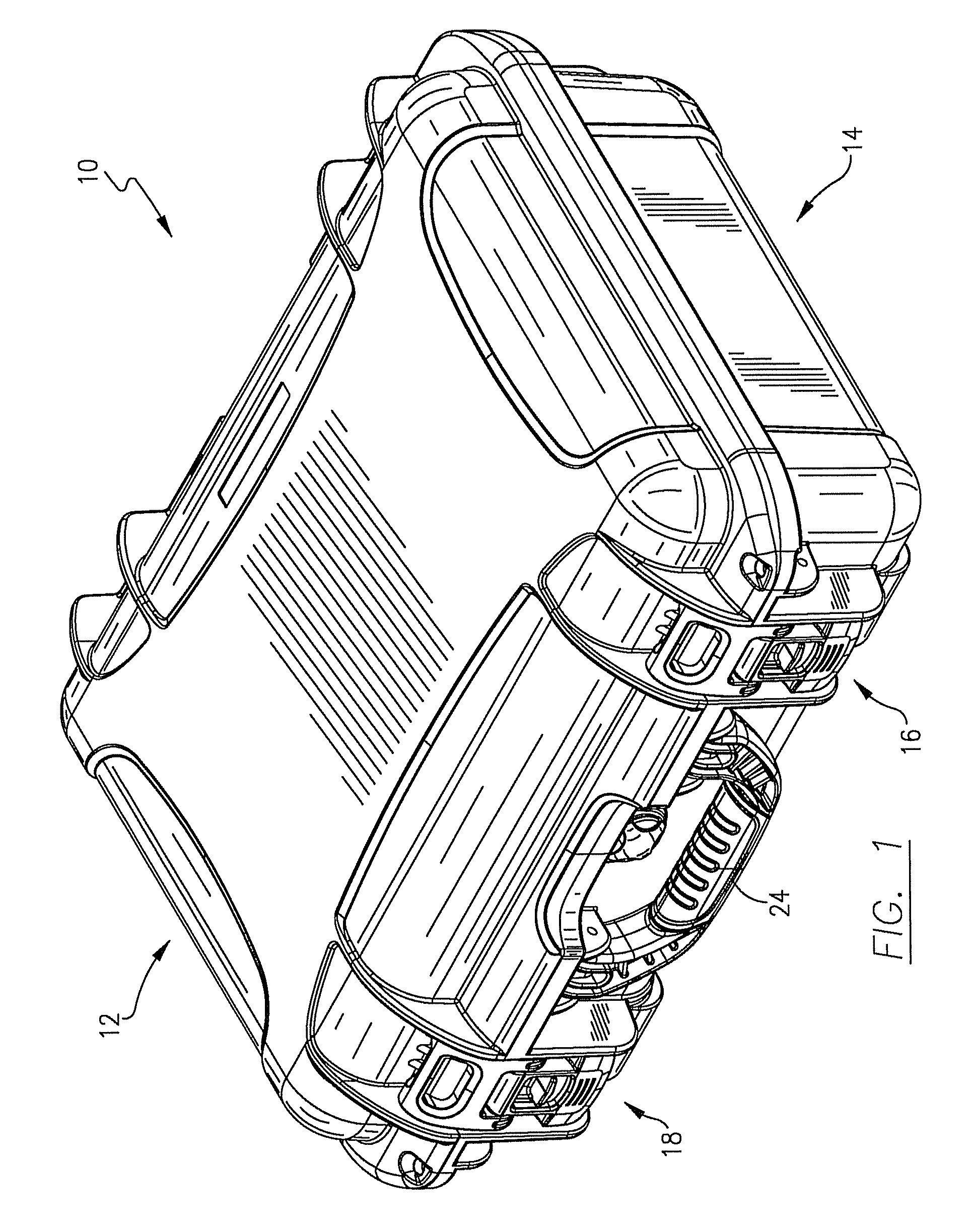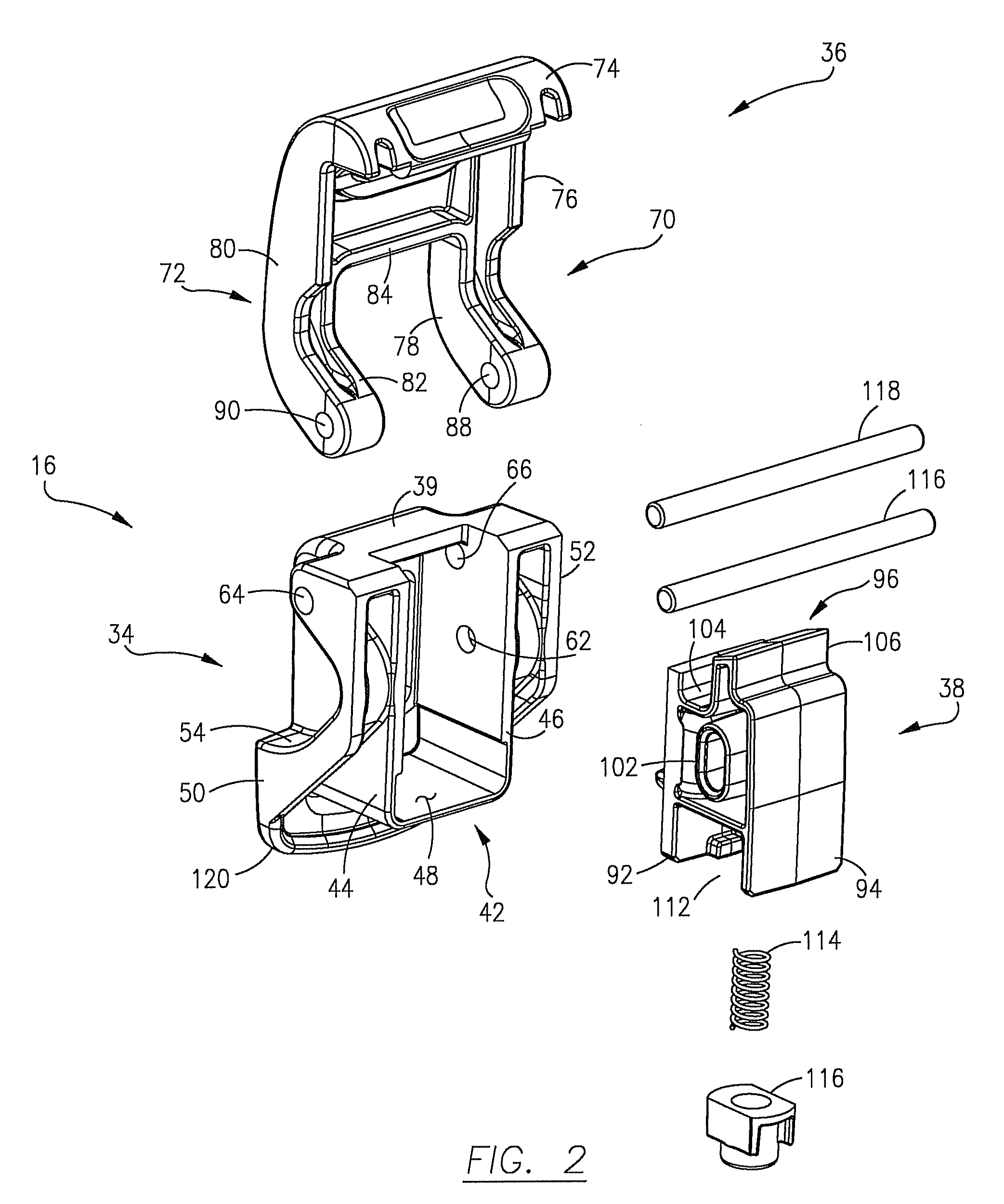Carrying case with locking latch mechanism
a latch mechanism and carrying case technology, applied in the field of carrying cases, can solve the problems of easy loss of keys, difficulty in conveying the combination of locks to a group,
- Summary
- Abstract
- Description
- Claims
- Application Information
AI Technical Summary
Benefits of technology
Problems solved by technology
Method used
Image
Examples
Embodiment Construction
[0024]Referring initially to FIGS. 1 and 6, a carrying case 10 is depicted having a top case shell 12 pivotally connected to a bottom case shell 14. Two latch mechanisms 16 and 18 are located along the front wall 20 of shell 12 and front wall 22 of shell 14 on either side of a handle 24. As best shown in FIG. 6, the front wall 20 of top case shell 12 is formed with a seat 26 and a downwardly facing slot 28 which receives the upper edge 30 of the front wall 22 of bottom case shell 14 when the case 10 is closed. The front wall 22 of the bottom case shell 14 is formed with a ledge 32, for purposes to become apparent below. Except as noted above, the detailed construction of the case 10 forms no part of this invention and is not described herein. Additionally, for purposes of the present discussion, the terms “top,”“bottom,”“upper,”“lower,”“downwardly,”“upwardly” and the like refer to the vertical orientation of the case as it is depicted in the Figs.
[0025]With reference to FIGS. 2-5, t...
PUM
 Login to View More
Login to View More Abstract
Description
Claims
Application Information
 Login to View More
Login to View More - R&D
- Intellectual Property
- Life Sciences
- Materials
- Tech Scout
- Unparalleled Data Quality
- Higher Quality Content
- 60% Fewer Hallucinations
Browse by: Latest US Patents, China's latest patents, Technical Efficacy Thesaurus, Application Domain, Technology Topic, Popular Technical Reports.
© 2025 PatSnap. All rights reserved.Legal|Privacy policy|Modern Slavery Act Transparency Statement|Sitemap|About US| Contact US: help@patsnap.com



